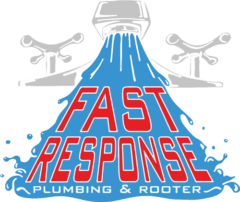Selecting the Right Faucet and Plumber for Your Needs

Choosing the right faucet and plumber is vital for a successful installation. We must consider different faucet types and assess the professional’s qualifications.
Understanding Different Faucet Types and Features
Choosing a faucet involves more than just style. There are several types, such as kitchen, bathroom, shower, and bathtub faucets. Each serves a unique purpose.
Single-handle faucets are easy to use, while touchless faucets offer convenience by reducing contact. For a sleek look, wall-mounted faucets are a great option although they might require some additional plumbing work.
Outdoor faucets need to be durable to withstand various weather conditions. Understanding these differences helps us select the right faucet based on our specific needs and the room where it will be installed. Let’s remember that not all faucets fit all plumbing setups, so checking compatibility is crucial.
Evaluating Professional Plumbers
When looking to hire a plumber for faucet installation, we need to focus on their experience and credentials. A plumber with a good track record in installing different faucet types, such as kitchen or bathroom faucets, can help avoid potential issues.
Verifying their licensing ensures they meet industry standards, while insurance protects us from unforeseen problems during installation. Reading customer reviews and asking for referrals provides insight into their work quality.
We should discuss the cost and the estimated completion time. A transparent and open communication helps avoid hidden charges. It’s also smart to see if they offer any warranty on their services. Hiring a skilled faucet installer ensures a smooth installation process.
Cost Considerations for Faucet Installation
When choosing a plumber for faucet installation, it’s essential to understand both the expected material costs and the labor costs involved. Knowing the price of different faucet types and how installation fees can vary will help us make informed decisions.
Estimating Faucet and Installation Costs
The cost of faucet installation can vary greatly depending on the type and quality of the faucet we choose. Basic bathroom sink faucets usually start around $50, while high-end options can go up to $500 or more. Kitchen faucets, due to their complexity, might range from $75 to $1,000. Bathtub faucets often fall in the same range as kitchen faucets.
Installation services can differ in price based on the complexity of the work. On average, the national cost to install a faucet can be between $150 and $350. The selected faucet’s materials and finishes, such as chrome, brass, or stainless steel, can also affect the total cost. Home improvement stores, like Home Depot, might offer package deals, which include the faucet and installation at a reduced rate. It’s essential for us to compare these options.
Labor Costs and Additional Factors
Labor costs account for a significant part of the total expense. On average, professional plumbers charge between $50 to $200 an hour for faucet installation. Complex installations, like replacing a kitchen faucet, can take more time, increasing the total cost. Depending on the location, labor costs may vary due to regional demand and availability.
We should also consider additional factors that could affect the price. For instance, if we need modifications to countertops or plumbing, this could incur extra charges. Some plumbers might offer fixed-price packages, while others work on an hourly basis. By evaluating these details and getting multiple quotes, we can make confident and cost-effective decisions for our faucet installations.
The Installation Process and Maintenance
Installing a faucet involves some important steps and tools to ensure a proper fit. Maintenance tips help keep the faucet functioning well for a long time. Understanding each stage can prevent leaks and other problems with the plumbing system.
Preparatory Steps and Tools Required
Before starting the installation, let’s gather the necessary tools and materials. First, we need a basin wrench, adjustable wrench, and flashlight. Teflon tape is crucial for making a watertight seal. We also need to consider the mounting type and mounting holes of the new faucet.
Turning off the shutoff valves is the first step. This prevents water flow during the installation. If removing an old faucet, unscrewing it with care is important to avoid any damage to our plumbing system. Supply lines also need to be checked or replaced if worn out.
Post-Installation Tips to Ensure Longevity
After installing the faucet, we should closely inspect for any leaks. testing the faucet and examining the surrounding areas. Let’s also ensure a watertight seal by properly using Teflon tape and checking if all connections are tight.
Regular inspection can help with dripping faucet issues. Occasionally, we should inspect the faucet repair needs and make necessary adjustments. This can include checking the alignment and tightness of fittings. Proper care can help extend the life of the faucet and prevent unnecessary repairs.
